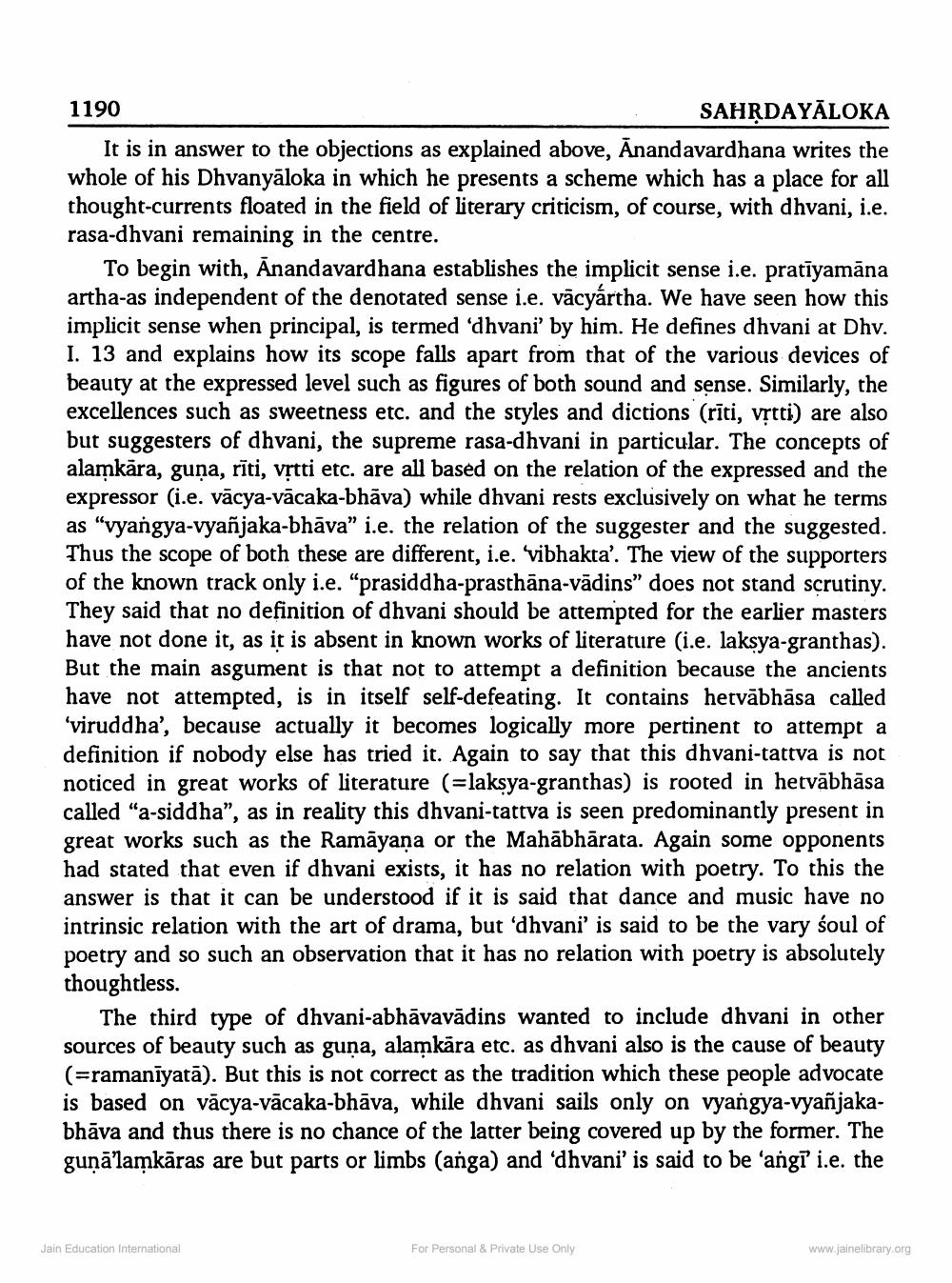________________
1190
SAHṚDAYALOKA
It is in answer to the objections as explained above, Anandavardhana writes the whole of his Dhvanyaloka in which he presents a scheme which has a place for all thought-currents floated in the field of literary criticism, of course, with dhvani, i.e. rasa-dhvani remaining in the centre.
To begin with, Anandavardhana establishes the implicit sense i.e. pratīyamāna artha-as independent of the denotated sense i.e. väcyártha. We have seen how this implicit sense when principal, is termed 'dhvani' by him. He defines dhvani at Dhv. I. 13 and explains how its scope falls apart from that of the various devices of beauty at the expressed level such as figures of both sound and sense. Similarly, the excellences such as sweetness etc. and the styles and dictions (rīti, vṛtti) are also but suggesters of dhvani, the supreme rasa-dhvani in particular. The concepts of alamkāra, guņa, rīti, vṛtti etc. are all based on the relation of the expressed and the expressor (i.e. vācya-vācaka-bhāva) while dhvani rests exclusively on what he terms as "vyangya-vyañjaka-bhāva" i.e. the relation of the suggester and the suggested. Thus the scope of both these are different, i.e. 'vibhakta'. The view of the supporters of the known track only i.e. "prasiddha-prasthāna-vādins" does not stand scrutiny. They said that no definition of dhvani should be attempted for the earlier masters have not done it, as it is absent in known works of literature (i.e. lakṣya-granthas). But the main asgument is that not to attempt a definition because the ancients have not attempted, is in itself self-defeating. It contains hervabhāsa called 'viruddha', because actually it becomes logically more pertinent to attempt a definition if nobody else has tried it. Again to say that this dhvani-tattva is not noticed in great works of literature (=lakṣya-granthas) is rooted in hetvābhāsa called "a-siddha", as in reality this dhvani-tattva is seen predominantly present in great works such as the Ramāyaṇa or the Mahābhārata. Again some opponents had stated that even if dhvani exists, it has no relation with poetry. To this the answer is that it can be understood if it is said that dance and music have no intrinsic relation with the art of drama, but 'dhvani' is said to be the vary soul of poetry and so such an observation that it has no relation with poetry is absolutely thoughtless.
The third type of dhvani-abhāvavādins wanted to include dhvani in other sources of beauty such as guna, alamkara etc. as dhvani also is the cause of beauty (=ramaniyatā). But this is not correct as the tradition which these people advocate is based on väcya-vācaka-bhāva, while dhvani sails only on vyangya-vyañjakabhāva and thus there is no chance of the latter being covered up by the former. The guṇā'lamkāras are but parts or limbs (anga) and 'dhvani' is said to be 'ang?' i.e. the
Jain Education International
For Personal & Private Use Only
www.jainelibrary.org




